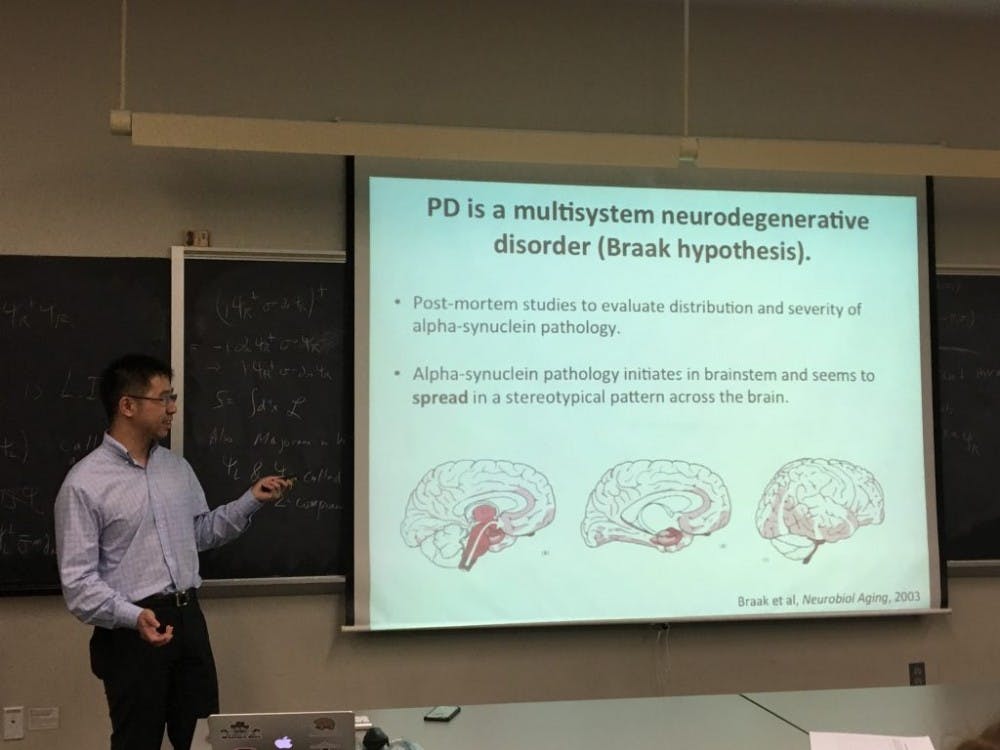“The impossibility of today is tomorrow’s possibility,” Moran Cerf, a professor from Northwestern University (NU), announced during his keynote presentation at the Oct. 25 Nu Rho Psi Undergraduate Research Symposium.
The symposium, held at the Bloomberg Center for Physics and Astronomy, featured different 10- to 15-minute presentations by 31 Hopkins students on their involvement in innovative research that could change the future.
Their research covered a broad range of subjects, from the effect of maternal stress on microglia behaviors in offspring to the relationship between fashion and feminism.
The annual event was sponsored by Nu Rho Psi, the Hopkins Neuroscience Honors Society.
According to an announcement made by the event cochairs, seniors Emily Lubin and Brendan Dang, Cerf was selected because he embodies the theme of expanding one’s understanding beyond a single body of knowledge.
A professor of business and neuroscience at NU’s Kellogg School of Management, Cerf began his career as a hacker, software developer, product architect and consultant for pharmaceutical and fashion companies before completing his doctoral degree in neuroscience at the California Institute of Technology.
He is also an Alfred P. Sloan Screenwriting Professor at the American Film Institute and has been named one of the 2016 Best 40 Under 40 Professors by Poets and Quants, a news site devoted to covering business school news.
In his keynote speech, “What Did Neuroscientists Learn in the Last 15 Years from Looking Directly Inside the Brains of Humans?,” Cerf detailed his current research, which involves observing patients undergoing brain surgery and analyzing responses from electrodes implanted in their brains.
His work has led him to mapping out what patients see in their dreams based on neurons that respond to certain visual stimuli, like pictures of Marilyn Monroe.
According to Cerf, the next frontier of neuroscience is Human 2.0, or using stimuli to teach the brain how to control external objects like robotic arms with thoughts, which could have useful applications in prosthetic limbs.
Lubin was satisfied by how the symposium turned out.
“The undergraduates who participated were really excited to present a 10-minute research talk since it was different from the typical poster presentation,” Lubin said. “It is a unique challenge to condense everything down to that time frame, and they rose to the challenge with enormous grace and success.”





